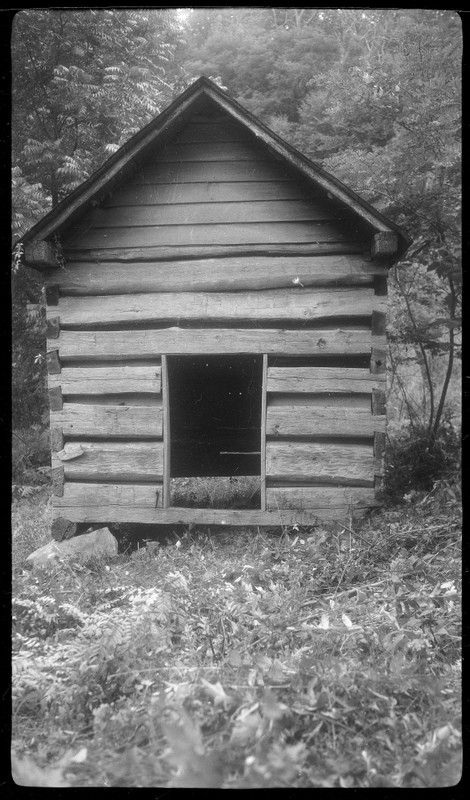Mountain Farm Museum Meathouse
Introduction
Text-to-speech Audio
Images
Visitors at the Meathouse in the 1960s

Meathouse located at Jim Conard's Farm

Present-Day Meathouse

Backstory and Context
Text-to-speech Audio
This meathouse was moved from Jim Conard’s farm in Little Cataloochee, North Carolina. Its location is an accurate representation of where such a building was typically be located on a real farmstead. The closer it was to the house, the more convenient and secure the family’s supply of meat was. A mountain family often hunted for meat to feed their family, but most of the time ate pork from hogs they had raised on the farm. The family butchered the hogs in the fall once the weather was cold enough to ensure the meat did not go bad until it was cured. To cure meat, the family used a large amount of salt to cover the meat and then placed the salt-covered meat onto shelves, in a box, or even inside of a barrel. The meat absorbed the salt that was put onto it, and by doing so it decreased the growth of bacteria, keeping the pork safe to consume. During the winter, the family cut smaller pieces of pork off of the larger piece to feed their family. Once the weather got warmer, the family had to prevent insects that might get into their meat. They solved this problem by covering the pork in different mixtures of spices but usually used pepper as a main ingredient. Additionally, families might pack their meat in containers filled with cornmeal, shelled corn, or clean sifted wood ashes to help combat insects. A lot of times this sort of storage helped add a sweeter flavor to the meat. If the meat was going to be smoked, it was hung inside a smoker for several days, even up to a week or longer. The process of smoking was another way of preserving the meat, while also adding a lot of flavor from the wood that was used to create the fire that resulted in the smoke.
Sources
Tom Robbins, Mountain Farm Museum (Gatlinburg: Great Smoky Mountains Association), 6.
Davis, C. Pioneer Farmstead Meat House, Open Parks Network. http://purl.clemson.edu/4E65B2AECB79C9F5F801EB4363B1752C.
Oconaluftee Farmstead, Open Parks Network. http://purl.clemson.edu/2ED12466311CA2FDF0BBF7789AA64CE9.
Sydney Johnson Photography
